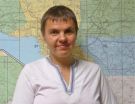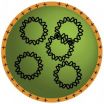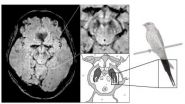(Press-News.org) Biogeographical data is useful in screening for disease risk and drug sensitivity associated with certain ethnic groups. A team of researchers, including an investigator from Children's Hospital Los Angeles, has developed a tool to accurately identify the biogeography of worldwide individuals. Previous tools were accurate in identifying place of origin within homogeneous European populations but highly inaccurate for places with significant immigration, such as the U.S.
Tatiana Tatarinova, PhD, of The Saban Research Institute of Children's Hospital Los Angeles, Eran Elhaik, PhD, of the University of Sheffield and colleagues developed an admixture-based Geographic Population Structure (GPS) tool that uses genetic distribution and geographical distance to determine place of origin, specifically the country, or in some cases, the village of origin. Their study will be published in the journal Nature Communications on April 29, 2014.
"We were surprised by the simplicity and precision of this method," said Tatarinova, who is also an associate professor of Research Pediatrics at the Keck School of Medicine of the University of Southern California. "People in a given geographical area are more likely to have similar genetics. When they also have genetic traits typically found in other, distant regions, the geographical origin of those traits is generally the closest location where those traits can be found."
Using a database of worldwide populations, the investigators developed a dataset of reference populations that are genetically diverse and have been geographically localized for centuries. With the GPS tool, the investigators were able to take unknown samples, identify the proportions of admixture--meaning, genetic characteristics specific to certain ethnic groups that were combined because of events like migration or invasion--and then calculate the distance to the nearest known population that shares the same admixture signature, in order to identify place of origin.
GPS was found to be both sensitive and specific. For example, in admixed populations such as Kuwaitis, it identified the countries of origin (Saudi Arabia and Iran), not just their current location. In the case of Sardinians, it placed a quarter of them within their villages. "We expect the incredible abilities of GPS to become useful in forensics, allowing us to help lost people find their way home," says Elhaik.
According to the researchers, in ethnically diverse regions like the U.S., where many people know only a few generations of their descendants, this kind of screening has important medical implications. Discovery of a certain genotype might indicate the potential for a genetic disease and suggest that diagnostic testing be done. Also, as scientists learn more about personalized medicine, there is evidence that specific genotypes respond differently to medications—making this information potentially useful when selecting the most effective therapy and appropriate dosing. The investigators are currently designing a study to correlate pharmacokinetics, the time course of drug metabolism, with genotype.
Genetic diseases are not the only driving force behind the development of GPS, according to Tatarinova. With a growing interest in the field of genealogy, more and more individuals are seeking information on their ancestral roots. Tatarinova has developed the website http://www.prosapia.org to allow anyone who previously obtained a DNA genotype to use the GPS tool to find their country or even village of origin.
INFORMATION:
About Children's Hospital Los Angeles
Children's Hospital Los Angeles has been named the best children's hospital in California and among the top five in the nation for clinical excellence with its selection to the prestigious US News & World Report Honor Roll. Children's Hospital is home to The Saban Research Institute, one of the largest and most productive pediatric research facilities in the United States, is one of America's premier teaching hospitals and has been affiliated with the Keck School of Medicine of the University of Southern California since 1932.
For more information, visit http://www.CHLA.org. Follow us on Twitter, Facebook, YouTube and LinkedIn, or visit our blog: http://www.WeAreChildrens.org.
Genealogy and biogeography meet personalized medicine
People in the US don't always know their village or island of origin -- but now they can
2014-04-29
ELSE PRESS RELEASES FROM THIS DATE:
Screening out: What are parents doing to limit screen time for young children?
2014-04-29
ANN ARBOR, Mich. – About 25 percent of parents who have children aged two to five say their children get three or more hours of entertainment screen time a day, well beyond recommended limits, according to a new poll from the University of Michigan.
In the latest University of Michigan Mott Children's Hospital National Poll on Children's Health, a little more than half of those parents do try to set some limits by location: banning media devices from places like the bedroom or at mealtime.
In 2013, the American Academy of Pediatrics issued updated guidelines to recommend ...
People rely on what they hear to know what they're saying
2014-04-29
You know what you're going to say before you say it, right? Not necessarily, research suggests. A study from researchers at Lund University in Sweden shows that auditory feedback plays an important role in helping us determine what we're saying as we speak. The study is published in Psychological Science, a journal of the Association for Psychological Science.
"Our results indicate that speakers listen to their own voices to help specify the meaning of what they are saying," says researcher Andreas Lind of Lund University, lead author of the study.
Theories about how ...
NOAA reports show strong economic gains from fishing, continued improvement in fish stocks
2014-04-29
U.S. commercial and recreational saltwater fishing generated more than $199 billion in sales in 2012, a gain of seven percent over the previous year, with the economic impact of fishing jobs increasing three percent from 2011 to 2012, according to a new NOAA Fisheries economics report.
Further, two more fish stocks were rebuilt to target levels in 2013, bringing the number of rebuilt U.S. marine fish stocks to 34 since 2000, according to another NOAA Fisheries report also released today.
Taken together, the two reports, Fisheries Economics of the United States 2012 ...
RI Hospital: Medicare patients with dementia 20 percent more likely to be readmitted
2014-04-29
PROVIDENCE, R.I. – A review of more than 25,000 admissions of Medicare beneficiaries to Rhode Island hospitals has found that patients with a documented diagnosis of dementia are nearly 20 percent more likely to be readmitted within 30 days than those without dementia. The study by Rhode Island Hospital researchers is published online in advance of print in the journal Archives of Gerontology and Geriatrics.
"Persons with dementia may have difficulties comprehending and following important discharge instructions, (e.g. medication changes, decision making, self care)," ...
Model sheds new light on sports-related brain injuries
2014-04-29
A new study has provided insight into the behavioral damage caused by repeated blows to the head. The research provides a foundation for scientists to better understand and potentially develop new ways to detect and prevent the repetitive sports injuries that can lead to the condition known as chronic traumatic encephalopathy (CTE).
The research – which appears online this week in the Journal of Neurotrauma – shows that mice with mild, repetitive traumatic brain injury (TBI) develop many of the same behavioral problems, such as difficultly sleeping, memory problems, ...
A risk management framework improves health systems' resilience to high-impact weather
2014-04-29
WASHINGTON — April 29, 2014 - According to a new study by the American Meteorological Society (AMS) Policy Program, a risk management framework can improve the resilience of healthcare facilities and services to high-impact weather such as tornadoes and hurricanes. The report is based on a recent AMS Policy Program workshop, A Prescription for the 21st Century: Improving Resilience to High-Impact Weather for Healthcare Facilities and Services, held in Washington, DC in October 2013.
The purpose of the study was to explore methods for improving the resilience of the health ...
Brain tumor cells penetrated by tiny, degradable particles carrying genetic instructions
2014-04-29
Working together, Johns Hopkins biomedical engineers and neurosurgeons report that they have created tiny, biodegradable "nanoparticles" able to carry DNA to brain cancer cells in mice.
The team says the results of their proof of principle experiment suggest that such particles loaded with "death genes" might one day be given to brain cancer patients during neurosurgery to selectively kill off any remaining tumor cells without damaging normal brain tissue.
A summary of the research results appeared online on April 26 in the journal ACS Nano.
"In our experiments, ...
Major lung resection safer than ever, especially at the busiest hospitals
2014-04-29
Toronto, ON, Canada, April 29, 2014 – A major new study using data from the National Cancer Data Base details the impact of annual hospital volume on 30- and 90-day mortality rates. Investigators found that major lung surgery has become progressively safer over the last few decades, although higher death rates at low-volume hospitals and an unexpected increase in mortality at 90 days compared to 30 days were observed. The study further suggests that choosing a center that performs major lung surgery regularly can have a strong impact on survival.
Lung cancer is the leading ...
'Tell-tail' MRI image diagnosis for Parkinson's disease
2014-04-29
An image similar in shape to a Swallow's tail has been identified as a new and accurate test for Parkinson's disease. The image, which depicts the healthy state of a group of cells in the sub-region of the human brain, was singled out using 3T MRI scanning technology – standard equipment in clinical settings today.
The research was led by Dr Stefan Schwarz and Professor Dorothee Auer, experts in neuroradiology in the School of Medicine at The University of Nottingham and was carried out at the Queen's Medical Centre in collaboration with Dr Nin Bajaj, an expert in Movement ...
CWRU researchers profile women's employment, caregiving workloads, effort and health
2014-04-29
A study from the Case Western Reserve University nursing school provides a profile of women with the dual responsibilities of full-time paid work and unpaid care for an elderly family member.
"We often hear caregivers talk about 'how much time and effort it takes' to provide care for their family members or neighbors," said Evanne Juratovac, PhD, RN (GCNS-BC), assistant professor of nursing at the Frances Payne Bolton School of Nursing and the study's lead researcher, "so we examined the experience of doing the workload on these women caregivers as the 'workers."
She ...
LAST 30 PRESS RELEASES:
Bharat Innovates 2026 National Basecamp Showcases India’s Most Promising Deep-Tech Ventures
Here’s what determines whether your income level rises or falls
SCIE indexation achievement: Celebrate with Space: Science & Technology
Children’s Hospital Colorado performs region’s first pediatric heart and liver dual organ transplant
Australian team discover why quantum computers have memory problems over time
What determines the fate of a T cell?
Candida auris: genetic process revealed which could be treatment target for deadly fungal disease
Groundbreaking discovery turns household plastic recycling into anti-cancer medication
Blocking a key inflammatory pathway improves liver structure and vascular function in cirrhosis, study finds
Continuous spread: Raccoon roundworm detected in nine European countries
HKUST Engineering researchers developed a novel photodetector to enhance the performance of on-chip light monitoring
Strategic river sensors could have forewarned of Texas Camp flood disaster
Drone sampling of whale breath reveals first evidence of potentially deadly virus in Arctic
Roman soldiers defending Hadrian’s Wall infected by parasites, study finds
Pinochet’s prisoners were tormented with music but still found solace in it, a new book reveals
Fertility remains high in rural Tanzania despite access to family planning
AI-assisted device can improve autism care access
Kinetic careers
Uncovering how parasitic plants avoid attacking themselves to improve crop resistance
Nanoparticle vaccine strategy could protect against Ebola and other deadly filoviruses
Study finds brain care score can predict risk of stroke across racial groups
Key lung immune cells can intensify allergic reactions
Do hormones explain why women experience more gut pain?
New materials conduct ions in solids as easily as in liquids
Breakthrough of the Year: Renewable energy begins to eclipse fossil fuel-based sources
LLM use is reshaping scientific enterprise by increasing output, reducing quality and more
Introducing LightGen, a chip for ultra-fast, ultra-efficient generative AI
Astronomers see fireworks from violent collisions around nearby star
ACC/AHA issue new guideline on managing congenital heart disease in adults
Cosmic crash caught on camera
[Press-News.org] Genealogy and biogeography meet personalized medicinePeople in the US don't always know their village or island of origin -- but now they can


